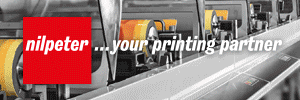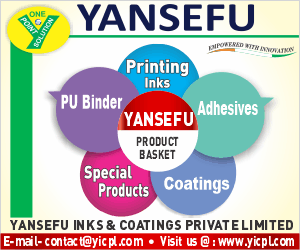As global economy is growing, the problem of environment pollution is also increasing rapidly and now it cannot be overlooked anymore. Indeed it is imperative for countries globally to restore their ecological environment. In 2016, the World health Organization (WHO) released a report on atmospheric pollution. In this report it is said that 92% of the world’s population are exposed to atmospheric pollution of hazardous level. Data from International Energy Agency (IEA) also shows that in 2016, 6.5 million died as a result of atmospheric pollution. One of the cause for atmospheric pollution is the use of organic solvents during industrial production. Therefore, a matter that urgently needs to be addressed is the reduction of use of organic solvent in order to reduce VOC emission.
As indicated in Figure 1 concentration of PM 2.5 is severe in India and China which means atmospheric pollution in India and China is extremely severe. Both countries suffer from a large degree of industrial pollution. In case of China, 25% of pollution comes from organic solvents as it is a manufacturing hub. Consequently, the Chinese government has propagated a series of policies and regulations to suppress the use of organic solvents in order to reduce environmental impact.

In 2016, China had revised its law on prevention of atmospheric pollution. According to new revised law incentive is given to the parties who are reducing the usage of toxic low-volatility organic solvents. The law also requires zero discharge or reduced VOC emission standard. The respective provincial/municipal governments also stipulate VOC emission charges based on their unique circumstances. In Shanghai, after 2017 a tax of RMB 20 is levied on every kg VOC discharged. Thus, it is very difficult for industrial enterprises to continue production by using organic solvents in major cities such as Beijing, shanghai, Guangzhou and Shenzhen. Even if factories that use considerable quantity of organic solvents were to be relocated to remote region.
There is little guarantee that these factories will not be relocated again or even ordered to stop production within few years. Therefore, if organic solvent can be removed from the list of raw materials for producing PTP blister packaging used for pharma application, the entire industry’s supply would be more stable and significant contribution would also be made to reduce environment pollution.
Role of heat seal coating for PTP and its demand
A survey conducted by Mitsui Chemicals shows that heat seal lacquer used in PTP is mainly adhesive resins like vinyl chloride, vinyl acetate. They are blended with various additives in solutions. When the heat seal lacquer is being applied on aluminum foil, VOC will be emitted during the drying process. In India most of the factories are not equipped with solvent recycle/incineration facilities to reduce the VOC emission so the VOC is directly going to the environment. In western countries and China solvent recovery system is in place but that is not the ultimate solution.
Following diagram shows how the PTP blister foil is made:
Why do we use solvents?
The solvent is just a medium to apply the heat seal material on foil by providing right viscosity and improving flow and leveling.
Estimated consumption of Al foil and HSL for blister packaging
As estimated by Mitsui Chemicals, in India around 35,000 tonnes of aluminum foil is used annually for blister packaging (PTP) production. About 11,000 tonnes solvent type heat seal lacquer (at 25% concentration and 5g/m2 coating weight) is used for it which leads to 8,200 MT of VOC emission/yr. VOC emission would be significantly reduced if such heat seal lacquer is replaced with water-based heat seal coatings.
|
Estimated quantity of Al foil used for Blister packaging |
35,000 MT/y |
|
Coating weight |
5.0 g/m2 |
|
Total Volume of Solvent based Heat seal lacquer |
11,000 MT/y (NV 25%) |
|
Total VOC emission |
8,200 MT/y |
|
Total CO2 emission |
16,400 MT/y |
Water-based heat seal coating – Chemipearl XSP
Chemipearl XSP is a new high performance water-based heat seal coating, tailor-made by Mitsui Chemical to answer the following key requirements of pharmaceutical blister packaging:
-
Solvent free material to avoid solvent retention in blister packs
-
Achieve high heat seal strength at low seal temperature
-
Achieve high production speed
-
Direct sealing with PVC as well as PVDC
Chemipearl XSP can be used for thermoforming as well as coldforming.
Most of the heat seal lacquer currently used for PTP is solvent type, generally containing vinyl chloride – vinyl acetate resin dissolved in organic solvents. Different type of acrylate resins are then added according to the desired heat sealing properties. In contrast, water acts as the solvent for water-based heat seal coating. This means that VOC will not be emitted during the drying process. At the same time the working environment is significantly improved, giving additional protection to works health.
Benefits of water-based heat seal coating
Changing from solvent-based HSL to water-based heat seal coating will bring following benefits:
Functional benefits
-
Low temperature sealing
-
No solvent retention as it is water-based
-
Free from chloro-based materials like vinyl chloride co- and ter-polymers
-
Suitable for high output machines
-
Compatible to seal with with PVC and PVdC with good seal integrity
-
Odorless lidding material
-
Environment friendly
Cost benefits
-
Coating cost per m2 of Al foil do not increase by shifting to the water-based coating
-
3-5 % increment in yield as the coating weight of Chemipearl XSP is 3-5 GSM only
In addition packaging materials which undergo low temperature heat sealing may not deteriorate as quickly as under high temperature. They are also more aesthetically appealing. Lastly, with increasing demand for high speed manufacturing, there is a need of heat seal coating that can provide good sealing at lower sealing temperature and that allows high speed packaging. As Chemipearl offer a wide sealing window as to temperature and dwell time it gives you more flexibility in production process.
Benefits of low temperature sealing
-
Lower sealing temperatures means lower energy consumption, which is one more step toward a more sustainable, environmentally friendly manufacturing process.
-
Low temperature sealing helps to eliminate fume generation and ink smudging during blister making process.
-
Low temperature sealing is helpful to reduce dwell times. Not only does this promote high line speeds, but it also avoids unnecessary exposure of the drug product to heat. This is especially important when packaging drugs containing large-molecule APIs (e.g., proteins), heat-sensitive excipients, or novel drug delivery systems.
-
Low temperature sealing helps to avoid stress forming in the bottom web. Even though PVC is forgiving when it comes to forming, like all polymers, it has a “memory.” At the forming station some stress is induced in the PVC, the thermoplastic blister material tend to relieve any internal stress when it is reheated during the sealing process. This will cause movement of material, leading to micro channels that might form weeks or even months later, and eventually result in leaks and a compromised shelf life.
-
Less heat in the sealing process might help reduce blister curl, which is usually introduced during the forming process and displayed when the forming material’s memory effect is evoked by applying heat a second time.
-
Applying less heat to paper-backed structures also avoids ‘scorching’ of the paper
Latest market development status
-
Water-based heat seal coating has been already approved by one of the biggest pharma company in India. Many other pharma companies are also under the evaluation process.
-
Some of the top converters of India like Packtime innovations and Bilcare has successfully conducted production feasibility trials.
-
Zhongjin matai, largest converter in China, has already started to introduce in Chinese market.
-
Taketomo, one of the topmost converters in Japan has already launched it in Japan. Japanese Pharma companies are welcoming this product because it is environment friendly.
Supporting data
Following graph compares the performance with solvent-based HSL based on the lab test:
Following graph shows the comparison of HSS of Chemipearl and the HSS of 72 blister samples collected from Indian market.
Regulatory status of Chemipearl
|
Country/Region |
XSP529 Regulatory approval |
|
USA |
US/FDA 175.105 and 175.300 |
|
EU |
EU Regulation No.10/2011 |
|
China |
China GB9685 |
|
Japan |
Japan/MHW notification No.370 |
Chemipearl XSP evaluation at Mankind Phamra
Mankind pharma had evaluated Chemipearl XSP529 by producing blisters on Elmac Pack 500XT machine. Performance of solvent-based heat seal lacquer was compared with that of Chemipearl XSP. The blister test was performed with dummy medicines. Following are the parameters used during the testing:
|
|
Solvent based HSL |
Chemipearl XSP |
|
Coating weight |
6-8 gsm |
3-5 gsm |
|
Heat Seal Temperature |
200°C |
150°C-200°C |
|
Foil thickness |
25 micron |
25 micron |
Evaluation of the blister packs
After making the blisters, their appearance was compared. Leak test and heat seal strength test was also conducted.
Blister shape comparison:
-
At 200°C PVC is melted so the deformation is observed in the shape of the pocket for solvent-based as well as water-based blisters. Whereas at 150°C the shape of pocket is uniform and without any deformation.
-
At 200°C pocket seems to be expanded near the edges of the pocket. The reason behind this is that PVC near the edges becomes soft at high temperature and when the pocket air tries to move out of the pocket during sealing process it creates a bulge in the pocket near edges.
-
When medicine is inside the pocket, the quantity of air in the pocket is low. So the impact caused by air while moving out is reduce up to a great extent but still we can find that at 200°C pocket seems to be expanded near the edges of the pocket.
-
At 200°C the height of the pocket is also lesser than the height of the pocket at 150°C.
Heat seal strength comparison:
HSS test conditions: Peeling angle 180° and Peeling speed: 200 mm/min
Leak test results comparison:
Leak test condition: Pressure was reduced to 450 mmHg for 180 sec, kept for 15 sec, and then released (leak test was conducted only with tablets).
Conclusion of the trial
-
Seal strength of Chemipearl at 160℃ is higher than the seal strength of solvent-based HSL at 200℃
-
Blister made with Chemipearl are more aesthetic.
Authors:
Abhineet Shrivastava – manager, overseas business development department coating and engineering material division Mitsui Chemicals
Soumyanath Mishra – head packaging development – Mankind Pharmaceutical















I want to buy
Heat seal lacquer [25% Solid]
Qty-1000 Kgs
Dear Sir
Good day
We are United Arab Emirates ( U.A.E.) based manufacturer of flexible packaging materials, mainly for food processing industry, we are in requirement of below materials, kindly let me know if you produce these materials:
1) Cold seal, to be applied on food contact side of packaging wrapper for chocolates ( For example Cadbury dairy milk )
2) Primer and heat seal lacquer , to be applied on food contact side of Al foil based lids for plastic dairy cups ( made from PET, PP etc.) the heat seal lacquer to heat seal with rim of plastic cup.( Heat seal lacquer will be in contact with dairy product packed in the cup)
3) Primer and heat seal lacquer , to be applied on food contact side of Paper/Met PET composite lid material ( film side of Met PET will be towards food packed , and heat seal lacquer will be indirect food contact )
4) Heat seal lacquer , to be applied on hard temper AL foil, ( for blister packaging application, also called pharma foil) , the heat seal lacquer to heat seal with PVC/PVDC blister film
5) Protective primer, heat seal lacquer to be used for producing cheese foil: end product is molten cheese filled triangular pieces of foil, the assemble consists of shell and lid components , the heat seal lacquer shall be in direct contact with cheese packed , the heat seal lacquer should be suitable for easy peeling
Kindly send to me technical specifications of above materials, your competitive price offer , CIF Jebel Ali port here in UAE. And your minimum order quantities for each material
Besides above materials, kindly let us know what other materials you offer for flexible packaging Industry.
Awaiting your replay at your early convenience
With Regards
Ashok Pandey
Business development manager
Amber Packaging Industries LLC
P.O. Box 33294 || Al Majaz Pearl Tower, 1st Floor || Sharjah (UAE)
Tel: +971 6 5500737 –ext-330, Fax: 06 5500747.
Email: ashok@amberpackaging.com || Web: http://www.amberpackaging.com